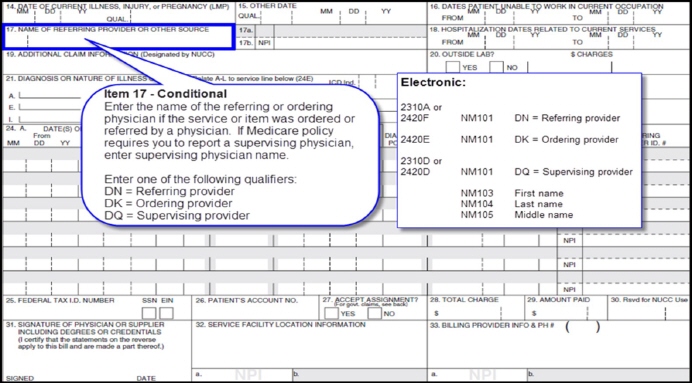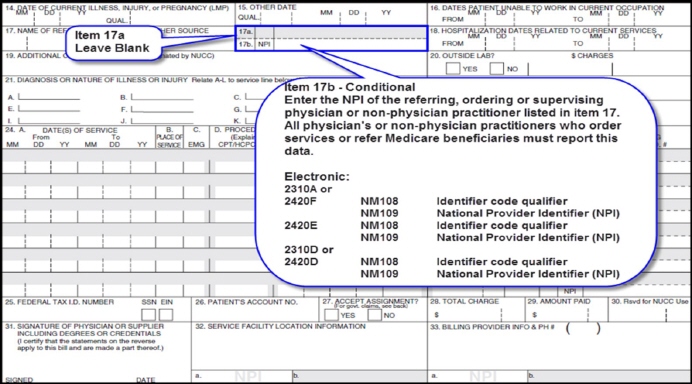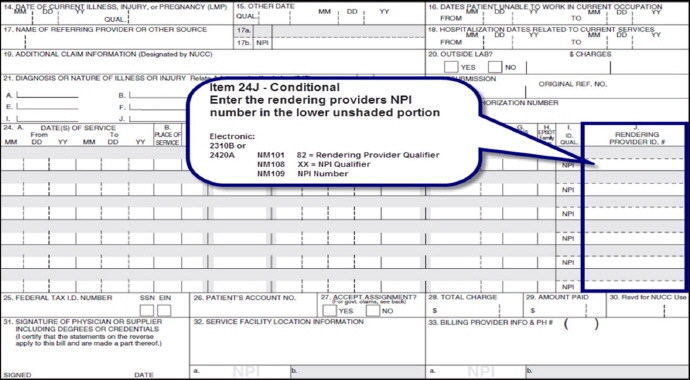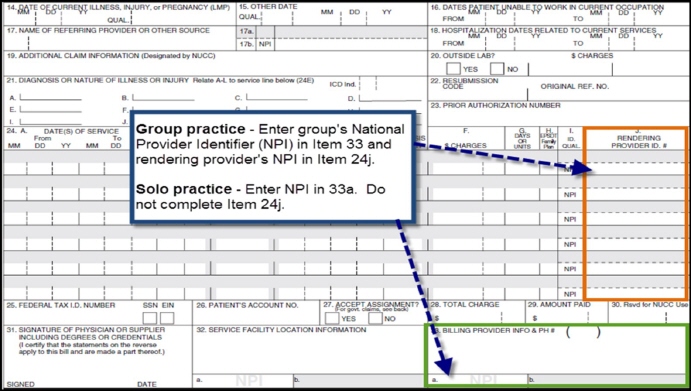Home ►
EM ►
E/M services furnished by a non-physician practitioner incident to a physician's service
Last Modified: 4/14/2024
Location: FL, PR, USVI
Business: Part B
Medicare pays for services and supplies (including drug and biologicals which are not usually self-administered) that are furnished incident to a physician’s or other practitioner’s services, are commonly included in the physician’s or practitioner’s bills, and for which payment is not made under a separate benefit category listed in §1861(s) of the Act.
Physicians may bill evaluation and management services when furnished by a nonphysician practitioner incident-to his/her professional service. The physician may bill the CPT code that describes the evaluation and management service furnished.
Evaluation and management services furnished incident-to a physician’s service by a nonphysician employee of the physician and are not as part of a physician's service are billed using code 99211.
A physician is not precluded from billing under the incident-to provision for services provided by employees whose services cannot be paid for directly under the Medicare program. Employees of the physician may provide services incident-to the physician’s service, however, only the physician is permitted to bill Medicare.
Services provided by employees as incident-to are covered when they meet all the requirements for incident-to and are medically necessary for the individual needs of the patient.
In order to be covered as incident-to the physician’s service, the service must be:
• An integral, although incidental, part of the physician’s professional service
• Commonly rendered without charge or included in the physician’s bill
• Commonly furnished in physician’s offices or clinics
• Furnished by the physician or by auxiliary personnel under the physician’s direct supervision.
Incident-to services must be performed under the direct supervision of the physician. Per CMS, “Direct supervision in the office setting does not mean that the physician must be present in the same room with his or her aide. However, the physician must be present in the office suite and immediately available to provide assistance and direction throughout the time the aide is performing services.”
CMS further indicates, under direct supervision, “This does not mean, however, that to be considered incident-to, each occasion of service by auxiliary personnel (or the furnishing of a supply) need also always be the occasion of the actual rendition of a personal professional service by the physician. Such a service or supply could be considered to be incident-to when furnished during a course of treatment where the physician performs an initial service and subsequent services of a frequency which reflects his/her active participation in and management of the course of treatment.” Hospital and skilled nursing facility services cannot be billed as incident-to at any time.
Incident-to services are coverable when performed by certified nurse midwives, clinical psychologists, clinical social workers, physician assistants, nurse practitioners, and clinical nurse specialists to assist or act in place of the physician.
Incident-to services performed in the office must meet the following guidelines:
• Service must be integral although incidental - services must be part of the patient's normal course of treatment, during which the physician performed an initial service and remains actively involved in the course of treatment. These follow-up services rendered must be connected to the course of treatment the physician planned at the initial service.
• Note: incident-to billing does not apply to a new patient or a new problem for an established patient.
• All practitioners, whether supervising and billing or performing the services, must be actively employed by the same entity. They may be an employee, leased employee, or independent contractor.
• Services are performed and billed in the physician's office using place of service 11 (physician's office). In a SNF/NF, the physician must establish an office and services are confined to this discrete part of the facility as his/her office. Visits performed outside of the designated office area in the SNF/NF would be subject to the coverage and payment rules applicable to the SNF/NF setting.
• Incident-to services furnished by staff of a substitute physician or regular physician are covered if furnished under the supervision of each.
Physicians are expected to perform subsequent services of a frequency that reflect active participation during the course of treatment for the specific problem.
Note: A patient with chronic sinusitis will probably not have to be seen by the physician as often as a patient with congestive heart failure.
Physician must be present in the office suite, immediately available and able to provide assistance and direction throughout the time the service is performed. The supervising physician does not have to be in the same room but must be in the office or clinic.
When a patient is seen in a group practice by a NPP, it is acceptable to have an NPP perform an incident-to service when another physician of the group is in the suite and available for oversight as needed. Group members may provide cross coverage for each other and incident-to guidelines can be met in this circumstance.
Services performed in the home by auxiliary personnel, such as nurses, technicians, and therapists are covered when performed incident-to the physician's service only if there is direct supervision in the home by the physician.
Incident-to service is not covered for the following:
• NPP can't see a new patient and the services be billed as incident-to the physician
• Incident-to does not apply in the institutional settings, this includes hospital and nursing facility.
• Clinical Social Workers cannot bill services performed incident-to under their NPI
• Medical Nutrition Therapy and Diabetes Self-Management Training services are performed
• Immediate Relatives or Household Members: reimbursement for charges imposed by a physician or his immediate relatives or members of his household are not made. It applies to items and services furnished incident-to a physician's professional services (for example, by the physicians’ nurse or technician) only if the physician who ordered or supervised the services has an excluded relationship to the beneficiary. The only exception is items furnished by an incorporated nonphysician supplier
• Diagnostic tests benefit set forth in §1861(s)(3) of the Act is separate and distinct from the incident-to benefit set forth in §1861(s)(2) of the Act - diagnostic tests need not meet the incident-to requirements
• Neither ambulance services nor emergency medical technician services performed under a provider’s telephone supervision
• Services which have their own statutory benefit categories
The patient’s medical records must clearly indicate the following:
• Individual who rendered the service
• Physician’s presence in the office at the time of the service
• Physician’s initiation and continued involvement in treatment
• Services within the scope of practice of the non-physician practitioner as defined by state law
• Reasonable and necessary
The documentation submitted to support billing incident-to services must clearly link the services of the NPP auxiliary staff to the services of the supervision physician. Evidence of the link may include:
• Co-signature or legibly identify and credentials (i.e., MD, DO, NP, PA, etc.) of both the practitioner who provided the service and the supervising physician on documentation entries.
• Documentation from other dates of service, for example the initial visit establishing the link between the two providers.
• Make sure the name and professional designation of the person rendering the service is legible in the documentation of each service.
CMS 1500 Claim Form or Electronic Equivalent
Claims are billed as if the physician personally rendered the services.
• Item 33 of the CMS 1500 claim form or electronic equivalent = individual physician National Provider Identifier (NPI)/group NPI
• Claim submitted by a group practice - Item 24J = physician’s NPI (billing for incident-to)
• Name of the physician or non-physician practitioner who performs the initial service and orders the non-physician service must appear in item 17
• Enter the qualifier to the left of the dotted vertical line on item 17 followed by the name
• DN= Referring Provider
• DK =Ordering Provider
• DQ =Supervising Provider
Claims for the services listed below require the name and NPI of the certifying physician or non-physician practitioner of the therapy plan of care be entered as the referring physician in Items 17 and 17b.
• physical therapy
• occupational therapy
• speech-language pathology services (including those furnished incident to a physician or non-physician practitioner)
Enter the NPI of the supervisor (when the person who ordered the service is not supervising) in the lower un-shaded portion of item 24J.
When directly supervising the incident-to service, enter the signature of the ordering physician or non-physician practitioner in item 31.
Not supervising the incident-to service, enter the signature of the physician or non-physician practitioner providing the direct supervision in item 31.
First Coast Service Options (First Coast) strives to ensure that the information available on our provider website is accurate, detailed, and current. Therefore, this is a dynamic site and its content changes daily. It is best to access the site to ensure you have the most current information rather than printing articles or forms that may become obsolete without notice.



 and CMS IOM Pub. 100-04, Medicare Claims Processing Manual, Chapter 12, Section 30.6
and CMS IOM Pub. 100-04, Medicare Claims Processing Manual, Chapter 12, Section 30.6  .
.


